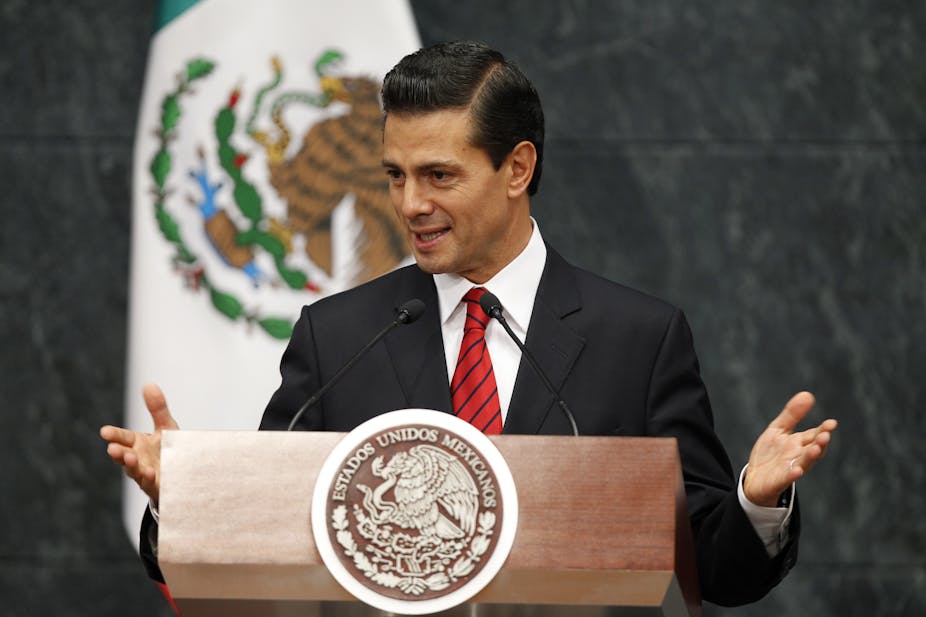As US president Donald Trump presses on with his personal crusade against us Mexicans, he’s finding out at last that the realities of government are quite different from the realities of life on the campaign trail.
Trump has now made his plan for a wall on the Mexican border official by way of an executive order but, in a democratic system, formulating a “policy” (if this one deserves the name) is completely different to implementing it. Building a concrete wall in the middle of the desert isn’t just a huge practical challenge; it’s a multi-billion-dollar vanity project – and one that would do little to stop illegal immigration or drug trafficking.
Unlike almost any other infrastructure project, there is simply nothing to be gained financially from a 2,000-mile wall in the middle of the desert – and, just as it was before the election, the real issue is less the wall itself and more who will end up paying for it. Trump has already conceded that the US will have to put up the money and get some sort of reimbursement from Mexico; now he must work out how. None of the available options are appealing.
A levy on remittances by illegal migrants is unrealistic, and would be hugely costly to implement. A blanket levy on all financial transactions to Mexico would punish millions of American citizens with families south of the border and the millions more Americans who either live there or own holiday homes there – to say nothing of the thousands of American companies that sell their products in the 15th-largest economy in the world, or the many multinationals (from Coca-Cola to Volkswagen) that have operations in both countries.
A likelier strategy, therefore, is that Trump will want to turn the wall into some sort of condition for renegotiating the North American Free Trade Agreement (NAFTA).
This is where our two countries will reach an impasse. Renegotiating the deal would be a hugely unpopular measure – not only are we a very proud nation particularly sensitive to slights (real or imagined) from our northern neighbour, there are also political realities that cannot be ignored. There is simply no way that Mexican president Enrique Peña Nieto´s government can accept to pay – in any way, shape or form – for that wall.
The fact of the matter is that Peña Nieto’s approval ratings are the lowest of any president since the transition to democracy, and in recent elections the Mexican electorate decided punished Peña Nieto’s party, the PRI, with a severe drubbing.
Plumbing the depths
After initially being lauded by Time Magazine as his country’s “saviour”, Peña Nieto is now facing an urgent crisis of legitimacy. His support has plummeted, the Mexican peso is near an all-time low, the case of 43 students who disappeared in Guerrero state in 2014 is still unsolved, and a sudden spike in petrol prices at the start of 2017 led to fuel shortages, protest and riots.
These are not happy times for the most unpopular president in generations. But then again, nothing brings us Mexicans together like some good old gringo-bashing. In Trump, Peña Nieto has both a useful distraction and the perfect scapegoat – he simply has to work out how to best deploy it.

Initially, he simply declined to react to Trump’s pronouncements; he then reached out, inviting the then-candidate to Mexico. It was a big mistake. Trump turned the visit to his advantage, while Peña Nieto was slated at home for what was seen as a major miscalculation. Mexicans decried him as a weak figure unable to stand up to a bully. And above all, the encounter simply failed to placate Trump’s inflammatory rhetoric – all this before Trump was even elected.
Nonetheless, after the election, Peña Nieto continued reaching out. He appointed a new foreign secretary, Luis Videgaray, who has strong personal ties to the Trump family, and organised a quick meeting with Trump in the White House.
But all that changed with a couple of tweets.
Once Trump dared Peña Nieto to cancel their meeting if Mexico wasn’t willing to pay for the wall, there was no going back. Trump only added insult to injury by signing the executive order on the same day as a Mexican delegation was flying to Washington to meet with his advisers, making it even easier for Peña Nieto to take the moral high ground.
Peña Nieto had no option but to call Trump’s bluff. Had he kept their appointment he would have implied he was at least willing to discuss the possibility of footing the bill. That would have been far more unpopular than the peso devaluation, the spike in petrol prices, and even the end of NAFTA.
The Trump administration apparently fails to understand that cancelling this meeting is the single most popular thing Peña Nieto has ever done. Suddenly, politicians across the spectrum, business leaders and society at large are all behind him. For all Peña Nieto’s travails – and for all his administration’s ineptitude when confronted with the new US president – Trump has managed to make a president with approval ratings in the low double digits look good.
Back, then, to who will pay for the wall. The Trump administration may be betting that Mexico has more to lose from a trade war than the US does and that it therefore has no alternative but to bow to pressure.
Perhaps – but we Mexicans have stood our ground through many other crises. Yes, most of them were of our own making – and no doubt a trade war would be painful. But we would get over it eventually and Trump might not. After all, if we’ve survived more than four years of Peña Nieto, we can surely manage four years of Trump.

